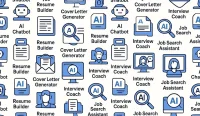The Stark Economic Divide Revealed by Corporate Leaders
The McDonald CEO recently dropped a bombshell on CNBC that exposed the harsh reality of America’s economic landscape. In a candid moment that cut through political rhetoric, he revealed what many Americans already know: we’re living in a two-tier economy where your financial experience depends entirely on whether you earn over $100,000 annually. This isn’t just corporate commentary—it’s a window into the fundamental economic challenges reshaping American society.
The McDonald CEO painted a picture of two completely different Americas. For those earning over $100,000, life is good. Stock markets are near all-time highs, international travel is booming, and confidence levels remain strong. But for middle and lower-income consumers, the story is dramatically different. Traffic from lower-income consumers at McDonald’s has dropped by double digits because people are either skipping breakfast entirely or choosing to eat at home instead.
This economic divide is particularly evident in the job market challenges facing working families today, where traditional employment opportunities are becoming increasingly scarce.
The Rising Cost of Basic Necessities
The economic pressure on working families has reached a breaking point. A simple McGriddle that once cost a couple of dollars now runs $9 at the drive-thru window. This isn’t just about fast food—it’s about the fundamental affordability of daily life. When even McDonald’s becomes a luxury purchase, something is fundamentally wrong with our economic system.
The reality extends far beyond restaurant prices. Basic necessities like meat, protein, and even coffee have seen astronomical price increases. While it’s technically still possible to eat cheaply, it requires significantly more effort and planning than ever before. Families are being forced to make impossible choices between feeding their children and paying other essential bills.
For those struggling to find stable employment, the career guidance resources available can provide some direction, but they can’t solve the fundamental economic pressures created by this two-tier system.
Struggling to Find Workers in a High-Cost Economy?
With prices rising, more job seekers are actively looking for better opportunities. Post your job on WhatJobs and reach them today.
Post a Job Now →Corporate Profits vs. Consumer Reality
Behind the scenes, a disturbing pattern has emerged in corporate America. Companies are beating profit expectations not through increased consumer spending, but through cost-cutting measures that directly impact workers and consumers. The Wall Street Journal recently revealed that American companies are achieving record profits by “squeezing out costs, boosting productivity, and turning to new technologies” while “holding down hiring” and “raising prices when they can.”
This corporate strategy creates a perfect storm of economic hardship. Companies are using AI and automation to avoid hiring new workers, forcing existing employees to work more for less pay. Simultaneously, they’re raising prices beyond what’s necessary, using inflation and tariffs as convenient excuses to pad profit margins. The result? Workers are paying more for everything while earning less in real terms.
The Financial Engineering Behind False Prosperity
Much of what appears to be economic growth is actually financial engineering. Companies are using share buybacks to artificially inflate their stock prices, making their earnings per share look better without actually improving their business operations. According to LSEG data, share repurchases added about 1.3 percentage points to the S&P 500’s gains in the second quarter alone.
When you strip away the price increases and look at actual consumer spending adjusted for inflation, the picture becomes clear. Consumer purchases have been flat since 2021. The apparent economic growth is largely an illusion created by rising prices rather than increased economic activity. This explains how the stock market can soar while most Americans struggle to make ends meet.
The Disproportionate Impact on Black Workers
The economic pain isn’t distributed equally across all demographics. Both the New York Times and Wall Street Journal have reported that Black Americans are experiencing particularly severe economic challenges. Unemployment among Black Americans has reached 7.2%, significantly higher than the national average, largely due to cuts to federal agencies.
This is particularly significant because the federal government has historically been a major employer of Black workers, helping to build the Black middle class. When government positions are eliminated without strategic planning, the impact disproportionately affects communities that have relied on public sector employment for economic stability.
The Subscription Economy Exploitation
Every aspect of American life has become a pay-for-play experience. Want to watch sports? You’ll need multiple streaming packages. A simple family dinner out costs $60-70 for mediocre food. Even video games have become subscription-based, with additional costs for every feature or advancement.
The cord-cutting revolution that was supposed to save money has become a nightmare of subscription fees. To watch all NBA games, you need seven different streaming services. Disney Plus offers ad-free versions for kids, but at a premium price. The level of nickel-and-diming has reached unprecedented levels, with companies finding new ways to extract money from consumers at every turn.
The Job Market Reality Check
Recent employment data paints a grim picture of the job market. Companies announced just 1,400 new jobs in August—the lowest for that month since 2000. Layoffs surged 39% to 85,000 jobs, while job openings reached one of the worst levels since 2020. For the first time in years, there are more job seekers than available positions.
This job market contraction is particularly devastating for recent college graduates, whose unemployment rates have skyrocketed. Companies are choosing AI and automation over hiring new workers, creating a generation of young people who can’t find meaningful employment despite their education and qualifications.
The employment opportunities available today reflect this harsh reality, with fewer positions offering the stability and benefits that previous generations took for granted.
Hiring in a Tough Economy?
Millions of Americans are actively seeking work right now. Post your job on WhatJobs and connect with them today.
Post a Job Now →The Manufacturing Sector’s Decline
The manufacturing sector, often touted as the backbone of American economic strength, has contracted for six consecutive months. The uncertainty created by constantly changing tariff policies has made it impossible for companies to plan long-term investments or hiring. No business wants to build manufacturing plants or hire workers in an environment where trade policies can change overnight.
This manufacturing decline has ripple effects throughout the economy, reducing opportunities for well-paying jobs that don’t require advanced degrees. The very sector that once provided stable, middle-class employment is now contributing to the economic divide.
The Psychological Impact of Economic Struggle
Perhaps most concerning is the psychological toll this economic environment takes on working families. Studies have shown that Americans are more likely to blame themselves for economic struggles rather than recognizing systemic issues. The deeply ingrained “American Dream” ideology leads people to view financial hardship as a personal failing rather than a structural problem.
This internalization of economic pain prevents collective action and political change. Instead of demanding better wages or protesting unfair practices, people turn inward, believing they simply need to work harder or make better choices. This psychological manipulation is perhaps the most insidious aspect of the current economic system.
Hiring in a Tough Economy?
Millions of Americans are actively seeking work right now. Post your job on WhatJobs and connect with them today.
Post a Job Now →The Path Forward
The two-tier economy isn’t inevitable—it’s the result of specific policy choices and corporate strategies. Addressing this divide requires both individual action and systemic change. Workers need to demand fair wages and better working conditions. Consumers need to resist exploitative pricing and subscription models. Most importantly, voters need to support policies that prioritize working families over corporate profits.
The McDonald’s CEO’s candid comments should serve as a wake-up call. When even corporate leaders acknowledge the economic divide, it’s time to take action. The current system is unsustainable, and the longer we wait to address these fundamental issues, the more damage will be done to American families and communities.
Frequently Asked Questions
What is a two-tier economy and how does it impact working families?
A two-tier economy refers to an economic system where there’s a stark divide between high-income individuals (earning over $100,000) who experience prosperity and low-to-middle income workers who face increasing financial pressure and reduced economic opportunities. This system forces working families to make impossible choices between basic necessities while corporations post record profits.
How does the two-tier economy affect consumer spending and daily life?
The two-tier economy creates a situation where lower-income consumers are forced to skip meals, reduce spending on non-essentials, and make difficult choices between basic necessities, while higher-income consumers continue to spend freely on luxury items and experiences. This creates a fundamentally different economic experience based solely on income level.
What role do corporate profits play in maintaining the two-tier economy?
Corporate profits in the two-tier economy are often achieved through cost-cutting measures like reducing hiring, increasing automation, and raising prices beyond necessary levels, which directly harms workers and consumers while benefiting shareholders and executives. This profit-maximization strategy perpetuates the economic divide.
How can individuals navigate the challenges of a two-tier economy?
Individuals can navigate the two-tier economy by seeking higher-paying opportunities, developing in-demand skills, reducing unnecessary expenses, and supporting policies that promote fair wages and economic equality. However, systemic change is ultimately needed to address the root causes of this economic divide.
Live Example:
Consider Sarah, a single mother working two minimum-wage jobs to support her three children. Despite working 60 hours per week, she’s forced to skip breakfast most days to ensure her children can eat. When her car broke down, she had to choose between fixing it and paying rent. She now walks 45 minutes to work each way, arriving exhausted and leaving little energy for her children. Sarah’s story isn’t unique—it represents millions of Americans trapped in the lower tier of our economy, working harder than ever while falling further behind.




